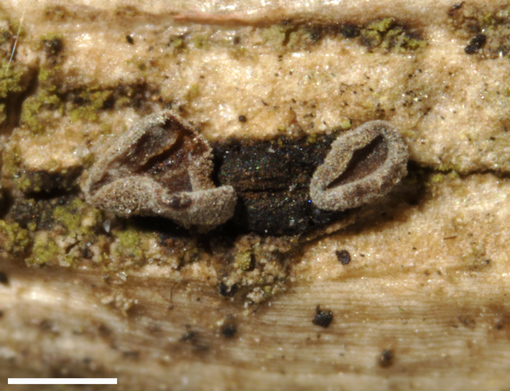When types are lost
It's a dire situation when a type specimen gets lost, since the type anchors a name and its application. If no duplicate specimens exist to designate as lectotypes, a neotype must be found. It's generally a good idea to look for a new specimen in the same place from which the species was first described, since that's most likely to reflect what the original author saw.
One dire type story revolves around a diminutive cup fungus, Pithyella hamata Chenant. Unfortunately, Chenantais's discomycete specimens were discarded by a French mycologist who felt they had little or no value, leaving this fungus name floating free without an anchor. An intrepid team of Cornell taxonomists set out to remedy this in September 1987. The three collectors, R.P. Korf, T. Iturriaga and W.Y. Zhuang, accompanied by Mme. Françoise Candoussau, traveled to the type locality in Ruffec, France to search for a neotype. At a farm called La Roche they found the host fungus Eutryblidiella, but the fungicolous Pithyella hamata was not found. The next day, however, a few kilometers to the north they were able to collect ample material of Chenantais's species to designate a neotype (CUP 61819).
With the name safely anchored by a neotype, Zhuang was able to evaluate the taxonomic relationships of this little fungus. She concluded that Chenantais's P. hamata should be recognized as a subspecies of another taxon. It is now properly known as Unguiculariopsis ravenelii subsp. hamata (Chenant.) W.Y. Zhuang.

